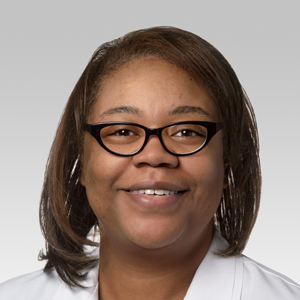What the Autism Spectrum Really Means
How Understanding Benefits Everyone
Updated April 2024
Autism spectrum disorder (ASD), formerly known as “autism,” is the official diagnosis and umbrella term for developmental disorders previously diagnosed separately as Asperger’s syndrome, childhood disintegrative disorder, Rett syndrome, pervasive development disorder and others. The term “spectrum” in ASD refers to the varying symptoms and severity.
“Autism spectrum disorder is a neurodevelopmental disorder that affects social communication,” says Yolanda Holler-Managan, MD, FAAN, a pediatric neurologist at Northwestern Medicine and Ann & Robert H Lurie Children’s Hospital of Chicago. “It can involve repetitive behaviors, high or low sensitivity to sensory experiences, restricted interests and strict adherence to routine. Since it is considered to be a spectrum disorder, each person’s symptoms can vary.”
How Common Is Autism Spectrum Disorder?
Autism spectrum disorder is a neurodevelopmental disorder that affects social communication.— Yolanda Holler-Managan, MD, FAAN
One in 36 children have ASD, and the degree to which it is immediately recognizable can vary widely because of how uniquely the symptoms present themselves. About 38% of people on the spectrum have an intellectual disability. It’s important to remember that IQ is not inherently associated with autism. Getting to know a person is often the best way to understand their diagnosis and experience.
“If the person is nonverbal, it can be helpful to determine what his or her means of communication are, for example, sign language, gestures or a communication device,” explains Dr. Holler-Managan. “While he or she may not have an intellectual disability, there are symptoms that can interfere with functioning, such as difficulty with transitions, impaired ability to have reciprocal conversations or difficulty with loud noises.”
Signs and Symptoms
While ASD is complex with varying degrees of symptoms, some common ones include:
- Poor eye contact
- Lack of facial expression
- Delayed or no speech
- Repetition of words, phrases or body movements
- Lack of emotions and awareness of other’s feelings
- Difficulty recognizing nonverbal cues
Diagnosis
The average age at being diagnosed with ASD is around 4.5 years, although it can be diagnosed earlier.
Diagnosing ASD can be difficult because there is no specific test to diagnose the disorder. Typically, physicians conduct a comprehensive evaluation. The process may include:
- A review of developmental history
- Observation of behavior
- Tests of cognitive and language abilities
- Interviews with parents, teachers or others who can answer questions about the person’s emotional and behavioral development
The diagnostic process aims to gather a complete picture of the person’s strengths and challenges to determine whether they meet the criteria for ASD.
Treatment
There is no cure for ASD, but early intervention and individualized treatment plans can improve outcomes and quality of life. Treatment plans are created to fit each person’s needs and may include a combination of the following approaches:
- Behavioral therapies
- Speech and language therapy
- Occupational therapy
- Medication
- Educational interventions, including an individualized education program (IEP)
- Parent education and support
Treatment plans should be flexible and regularly reassessed to ensure they meet the evolving needs of the person diagnosed with ASD.
Understanding ASD Benefits Everyone
As its name implies, autism spectrum disorder results in a wide range of experiences. A person with ASD can live independently, attend college and work professionally. Some people can function seamlessly in society, yet there are others who may need significant assistance with the activities of daily living. While therapies and medication can help people with more severe symptoms, it’s important to remember that there is no cure for autism, and many people on the higher-functioning end of the spectrum do not consider themselves in need of one.
Similarly, there is no one distinct cause. Studies have shown that autism occurs at the same rate in children who are vaccinated and unvaccinated, and most scientists believe that environmental and genetic factors contribute.
Education and understanding are essential to helping diminish the stigma surrounding an ASD diagnosis and can provide a complete picture of autism. Online communities can be a valuable resource to help you learn from people living with autism. However, as with most information found on the Internet, it should not be a considered a substitute for medical counsel.
Learn more about autism spectrum disorder in children.





